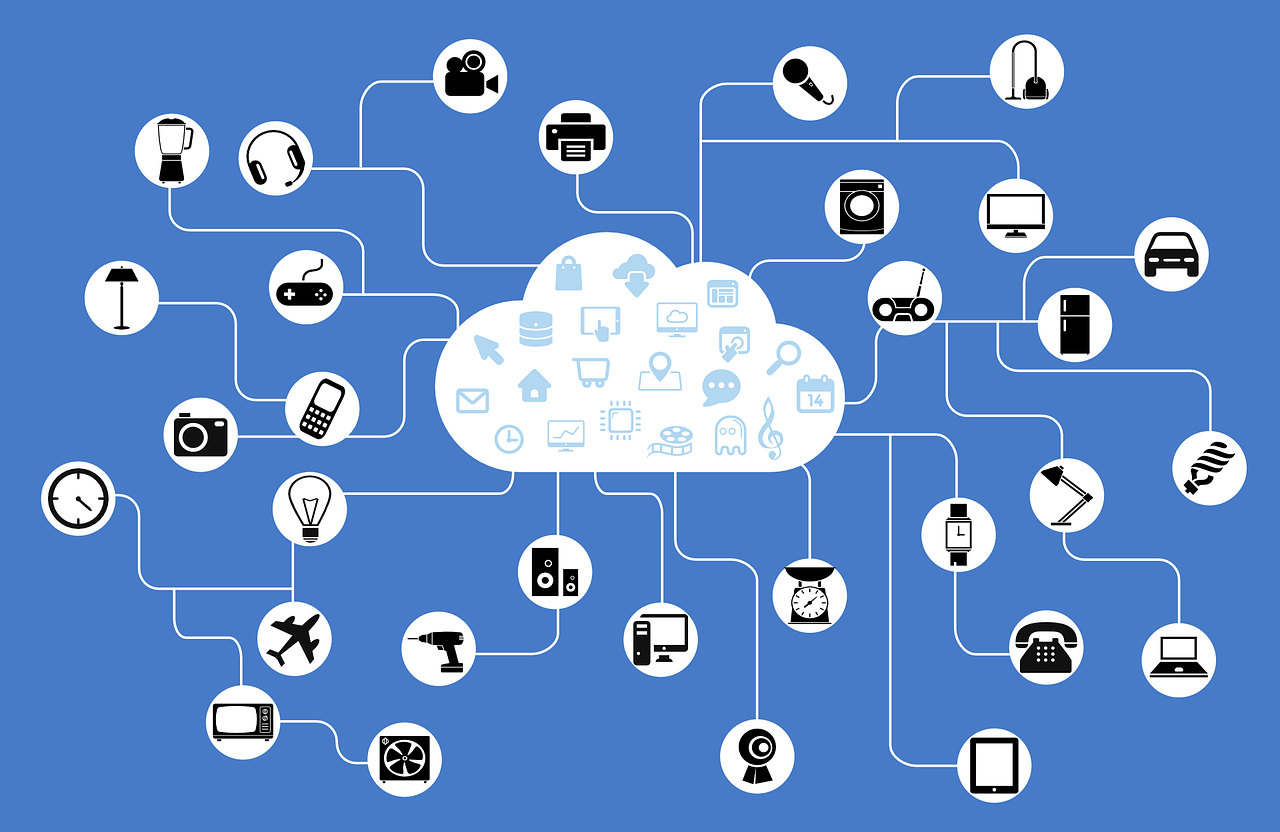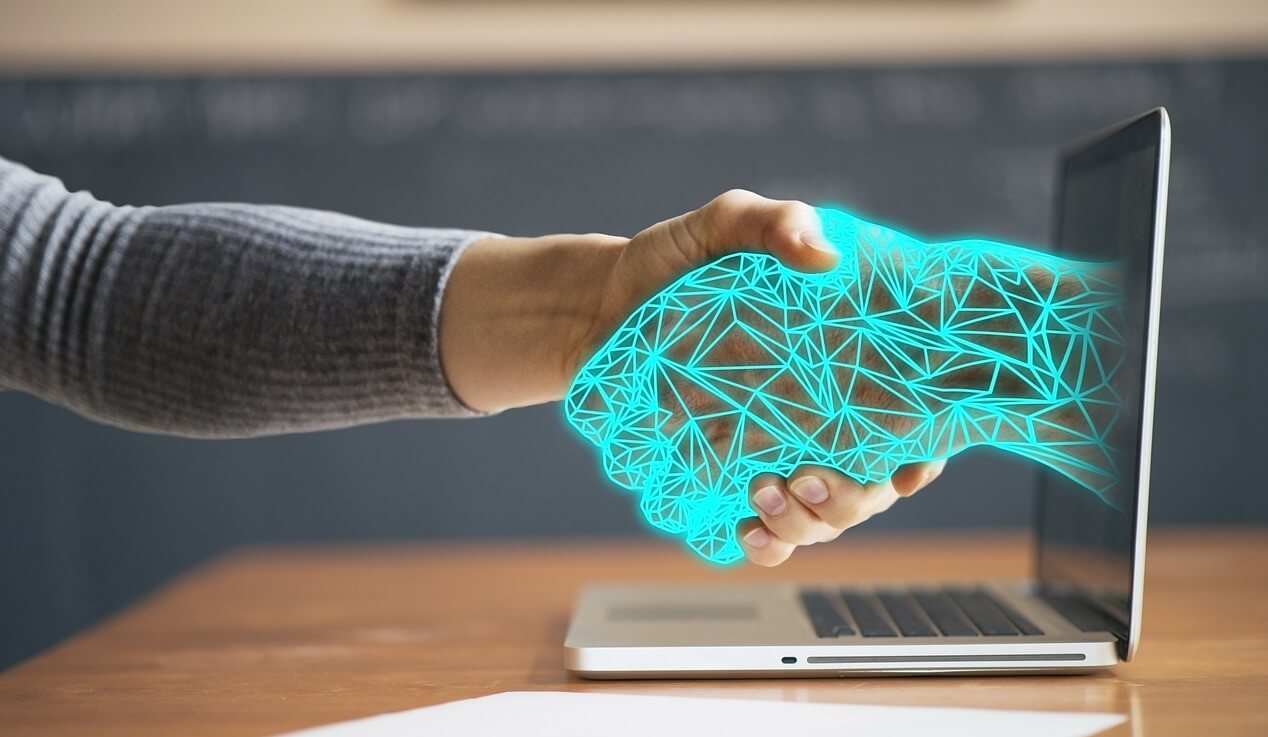The COVID-19 crisis brought unprecedented changes to the business world. And sales leaders in particular have to navigate paradigm shifts as companies move to preserve cash flow and reduce spending.
So how can you as a sales professional successfully close online B2B sales in this ‘new normal’? What are the best practices to sell remotely amid the pandemic?
Management Events checked with our sales managers across Europe for business-to-business (B2B) sales tips and advice on adapting to virtual selling and developing online strategies for better prospect engagement.

How has COVID-19 impacted your sales process?
Different sales managers have their own B2B sales techniques and routines, but all of them are in agreement that the outbreak has changed how they communicate with prospects and existing clients.
Knott: My sales process was not impacted because I have always been working over the phone or using video conferencing tools. But COVID-19 has, of course, affected the way of approaching and reaching the customers.
Werring: Our sales processes are definitely different from before. Generally, we see that we would need more meetings to close the deal, and the sales cycle takes longer than usual. Also, our concept in the Netherlands is based on face-to-face meetings, which is not possible for the meantime, so we had to change the way we sell – 100% virtual.
Komulainen also agreed with Werring’s statement on the longer sales cycle, noting that sales reps have to re-look at their communication strategy.
Komulainen: The base of my sales process has always been to find out the goals and ambitions of my customers. Then, together with the customer, we discuss whether cooperation with Management Events helps them reach their goals. Now, due to COVID-19, many companies have shifted their goals from growth to survival, and are a bit hesitant on new commitments. Hence, the sales cycles are longer and require more patience and understanding of the customer’s situation.
How have you adapted your sales approach to the current times?
The social and economic constraints of the pandemic are causing salesforces to quickly evolve their B2B sales approach to engage clients. And for Komulainen, although he understands that businesses are hesitant to spend at this time, “on the other hand, you have to be very assertive.”
Komulainen: Clients are very unsure, and they have every right to be. Some of them need a bit of extra convincing and help to make decisions. I try to find out whether clients are already looking to the future and trying to adapt to this new situation or if they are simply waiting for this storm to pass. For the ones that are trying to move forward, we can be of massive help.
Werring and Knott’s sales approaches also adapted to the current situation, leveraging on empathy and improved personal selling.
Werring: There are more meetings involved, and more empathic conversations about safety and family. I first try to understand how the client is doing personally, then understand how the company is doing, and the business in general. If all is good, then I will try to sell.
Knott: I have always been really personal with clients, but due to home office situations, my personal selling has increased even more.
Sales professionals who engage in personal selling focus more on helping clients to solve problems and find solutions for their pain points. In these times more than ever, prospects need to feel that you have their best interest in mind, and are not just looking to make a sale.
Knowing and addressing customer concerns give you the opportunity to diffuse any worries they may have, and a higher chance of them making a purchase decision.
Some companies are drastically impacted by the outbreak.
What is your strategy when contacting them about our services?
Knott: You have to approach them on a really personal level, and understand both their private and professional situations. See if and how we can still support them and offer our service.
Werring: You need to first show them compassion, and understand how they are affected business-wise and personally. Then you move towards helping them to improve and grow again, and how you and your company can assist them with that.
Komulainen: First, it’s key to find out just how they were impacted, where their focus is, and what their goals are, if they are at all hopeful about their future. We need to emphasize our key value driver – for us, it’s the quality of our events and business networking. We are still bringing in top delegates from the top companies in our market. If their services are relevant to the delegates at this moment or in the future, we offer a smooth path to direct discussions with these decision makers.
What are some of the biggest pros and cons of selling virtually?
While some sales reps have had difficulties in transitioning to remote selling, others took the change in stride. From a boost in productivity to interactive online presentations, virtual selling has become an important B2B sales skill.
Knott: The government may not allow physical meetups, but selling virtually has higher efficiency and simpler internationalization.
Werring: When conducting remote sales, you become much more efficient time-wise, as there is no need for traveling. Also, it’s easier to share your screen to show information, data and more with the clients.
Komulainen: Meeting virtually is much more efficient and structured. It’s so important to keep your camera on in order to keep your customer engaged. Also, you have different tools to share and visualize content. Some people like to draw, some show videos. You have so many options to choose from.
However, as with every sales strategy, there are both advantages and disadvantages of virtual B2B selling. And the essence of in-person meeting seems to be the most missed aspect of the new era of sales.
Knott: The core-competence of physical face-to-face meetings is gone, and there are no chances for extended networking and mingling, such as lunch or dinner, and talks by the coffee machine.
Komulainen: I miss being out, having a casual talk with a client in the lobby or while getting coffee. Meeting face-to-face is more personal and casual, you know.
Werring: There is no real connection, making it hard to fully ‘feel’ somebody, and customers tend to get bored faster. There are also technical issues, like the camera not always working and such.
Objections are part and parcel of sales, and many businesses are using COVID-19 as their reason against spending on a service.
How do you handle this particular sales objection?
Komulainen: Goals and ambitions – that’s the key, in my opinion. If a company wants to achieve growth or build relationships during this trying time, today is always the best time to start.
Werring: In our concept, we always need to show a clear ROI and of course, in that sense, the costs precede the benefits. You need to make the client understand that, even in hard times, it’s not wrong to do the RIGHT investment!
Knott: First of all, dig deeper! What’s the objection: company regulations, budget cuts, staff cuts, and why? Even with the outbreak, life and business go on, and companies still need leads.
Instead of viewing it as the end of a lead, you should think of a sales objection as an opportunity to learn more about your client’s needs and a new way to effectively show the value of your product or service.
Werring: Make the client realize that their workforce will be at home for the foreseeable future. And to keep them stimulated, an event works great, even though it’s virtual.
Komulainen: It’s not so much an objection towards us or other service providers, but more to their own business and self-belief. If we want to truly help them, we have to find out where the real problem lies. If the problem is lack of money coming in, or in other words, sales, we can help them same as always.
How do you think B2B customers are responding to online selling and virtual conferences?
Werring: Great! Online sales definitely works, as we do most of our business remotely now. Virtual conferences also work – but they are generally less fun. However, to get connections and continue with developments and growth, they are definitely effective.
Komulainen: The initial shock has passed in most industries. The problem with virtual conferences is that there are so many of them. It seems that every other company decided to make their own webinars, and spam their customers and contacts with invitation to free webinars on different subjects. This created a sort of backlash. The quality and value of said webinars took a dive. I started hearing things like, “I do not want to take part in virtual webinars or conferences.”
But just like how companies are adapting differently to the consequences of the coronavirus, so too are the responses of B2B clients to virtual selling and events.
Knott: Every customer has a different opinion about going virtual. Some see the advantages and the higher efficiency of online events, and are happy to attend from home offices. On the other hand, others think that it doesn’t have the same value as a live conference, and compare us with standard webinars.
So how can sales reps try to convince their clients on the value of their service?
Komulainen: The correct question to ask is, “Why?” They can tell you things like, “There’s no interaction between attendees” or “Low attendance and quality of attendees.” Then it’s easy to tell them how we have solved these issues at our virtual events.
What tools or working habits have been useful in helping you to get the sale remotely?
With lockdowns and movement restriction orders implemented throughout the countries, sales forces have to find alternative means of communication and selling.
Knott: Engagement sales method (ESM) tools are needed more than ever. We in DACH have always been selling over the phone or using video call tools, but Microsoft Teams made this a lot easier.
Werring: I agree that ESM has been a valuable tool, which we developed for virtual selling a couple of years ago. Teams and Zoom are also useful in communicating with clients and getting the sale.
Komulainen: MS Teams is so helpful when it comes to selling. But I’m also experimenting taking walks during phone meetings. Short walks help to keep me energized during the days that involve a lot of sitting.
What common mistakes do you think salespeople are making during remote sales?
Werring: Common mistakes would be forgetting about the whole COVID-19 situation, and starting to sell right away, instead of first understanding the client and the climate the client is in. Other mistakes are not dressing up for a meeting and pitching too much, instead of making it a dialog.
Knott: The mistake salespeople often make is feeling too laidback working from home, and not dressing up for the video calls. You need to dress to impress!
Komulainen: For me personally, it was essential to stop presenting and start selling. I think, as sales people, we are used to selling in our own way, but now we had to adapt very quickly and some mistakenly started presenting instead of selling. With virtual meetings, it’s more difficult to keep the customer engaged and intrigued, so we really have to be on our toes and keep focused.
What tips and advice would you give to salespeople to succeed in online selling?
Both Komulainen and Knott agreed that sales personnel need to get their basic preparations and materials ready for a successful virtual sales meeting.
Knott: Good preparation for meetings is vital. Make sure all the links you would like to share with the customer are ready, such as links to your sales materials on the enterprise service management and digital asset management platforms.
Komulainen: Have a clear structure to the meeting and inform it to the customer too. I like to close the agenda or the structure very firmly, such as “This is the agenda. Is this a good use of your time or should we make alterations to it before we start?”
Werring: Dress to impress, and don’t forget the importance of small talks, especially in times like these. Keep the meetings dynamic and fun. Let the customer talk as much as you can allow, and keep the pace of the meeting high to make sure they won’t get bored.
Knott: It’s a good idea to warm up your calls by talking to a colleague to warm up your tongue. Also, dress up and smile so customers can hear and see the professionalism.
Komulainen: Keep the meeting efficient, and engage the customer. Ask the right questions and really listen. Salespeople are problem solvers of the best kind as we are here to help.











 Effective talent deployment
Effective talent deployment
 Change is ever consistent, and leaders who are unwilling to embrace the technology-driven future of business risk falling behind their competitors, especially in the current time of
Change is ever consistent, and leaders who are unwilling to embrace the technology-driven future of business risk falling behind their competitors, especially in the current time of 







 However, they had faulty software that let anyone who obtained a camera’s IP address look through it — and sometimes listen as well. Thus for at least two years (2010 – 2012), the SecurView webcams allowed the transmission of user login credentials in clear, readable text over the internet! It did not just end there. Even their proprietary mobile app for the cameras stored users’ login credentials in clear, readable text, right on their mobile devices allowing anyone who obtained a camera’s IP address to look and sometimes listen through it as well.
However, they had faulty software that let anyone who obtained a camera’s IP address look through it — and sometimes listen as well. Thus for at least two years (2010 – 2012), the SecurView webcams allowed the transmission of user login credentials in clear, readable text over the internet! It did not just end there. Even their proprietary mobile app for the cameras stored users’ login credentials in clear, readable text, right on their mobile devices allowing anyone who obtained a camera’s IP address to look and sometimes listen through it as well.



 Based on the GDPR, all third-parties that are accessing or will access the data of the controller, including vendors, partners and external data processors, must be in compliance with the regulations.
Based on the GDPR, all third-parties that are accessing or will access the data of the controller, including vendors, partners and external data processors, must be in compliance with the regulations.
 Executive leadership is vital in ensuring the organization remains compliant with the regulations.
Executive leadership is vital in ensuring the organization remains compliant with the regulations.



 Video conferencing apps became a favorite target
Video conferencing apps became a favorite target
 This translates to creating measured freedom from business-as-usual rules, especially when it relates to funding, contracting, hiring, and reporting. The company can expect significant breakthroughs provided the CFOs know how to exercise their levers to empower and encourage innovation by understanding which rules to relax and which to follow. In this sense, a holistic CFO can validate how ideas outside of the current business logic may be worth pursuing.
This translates to creating measured freedom from business-as-usual rules, especially when it relates to funding, contracting, hiring, and reporting. The company can expect significant breakthroughs provided the CFOs know how to exercise their levers to empower and encourage innovation by understanding which rules to relax and which to follow. In this sense, a holistic CFO can validate how ideas outside of the current business logic may be worth pursuing.